Bolt Action Campaign Fortress Budapest
With the campaign Fortress Budapest supplement Bolt Action opens up a new theatre of war on the southern area of the Eastern Front. And unlike some of the other campaign supplements, it wasn't already covered in one of the broader books.
Fortress Budapest covers the late war Budapest Offensive of the Soviet and Romanian armies against the Nazi German and Hungarian forces, between 1944 and 1945. So this extends the battles of the Eastern Front, including the "smaller" allied nations of the Axis and Allies. With 168 pages this campaign supplement shares the status of begin the thickest campaign supplement so far with Western Desert. Yet Warlord Games keeps the price at 19,99 GBP or 30 USD and offers as usual a exclusive miniature for customers who order directly at them, Major Edomar Tassonyi. And once again we have an updated cover, but this time the motiv stayed the same, was just updated to a more battle worn image of the same soldier.
This book is the first written by Bryan Cook, but if I am not mistaken he worked on the original Australian army list, that parts of campaign New Guinea are build upon. And it is not the first time that the Romanian and Hungarian forces see some attention, both already got some smaller army lists and theatre selectors in Italy and the Axis.
What is it about?
As the title suggests, this campaign supplement is all about the siege of Budapest in 1944 to 1945, thus making this very clear late war content. The Budapest offensive began in October 1944, with a general attack of the Soviet and Romanian armies, after the Soviet forces managed to secure Romania with the Iasi-Kishinev Offensive and pushed further into the Balkans. An alliance of German and Hungarian forces attemps to stop the offensive by the combined Red Army and Romanian forces. In October and November 1944 a first attempt to sack Budapest failed, due to the resistance of German forces. When in December Belgrade was liberated, more troops moved into Hungary and levelled out the balance of power. The Soviets were able to launch two attacks north and south of Budapest, trapping around 80,000 German and Hungarian soldiers within the city. In January German reinforcements started a strong counter-offensive, manageing to push the frontline up to 25 km from the city, but the Soviets maintained the encirclement. In february the Red Army put a lot of force on the besieged city and after half a month, the German troops surrendered. With the fall of Budapest, the Heeresgruppe Süd more or less collapsed, openening up the road to Vienna, Czechoslovakia and the southern border of the German Reich to the Allied forces on the eastern front. But the book starts earlier with the Soviets moving into Hungary at the Ojtózi Pass and Battle of Turda, and doesn't stop with the fall of the city, but continues until the Operation Spring Awakening.
This series of battles, including the intro and outro are covered on roughly 100 pages with 16 scenarios. As this supplement is about besieging and defending a city, a lot of the scenarios are about city fights, a bit similar to the Road to Berlin. The new order of chapters is continued with Fortress Budapest, as the new units aren't spread across the entire book but covered in a chapter of their own, with solid 30 pages of new units. After that we have 20 pages of theatre selectors, and last but not least the usual last part of any Bolt Action supplement, the additional special rules. No big surprises here with them covering city fighting, snow and minefields.
First Impression
Warlord Games and Osprey do a proper job on these supplements. You get an intro on the historical situation, it is well balanced with illustrations, artwork and battle scenes. I am more than pleased with the new assortment of the information, that the new units are now combined in a chapter of their own, and not spread across the whole book anymore. It just makes it so much easier to find and keep track. The book reminds me a lot of Road to Berlin. There is a lot of city fights, but with a bit heavier gear as the Hungarian and Roman army lists are more of an army than the Polish / Czech militias. Usually these smaller factions only have metal miniatures and mostly resin vehicles, but as both are heavily supported by their "big brother" each, you have access to the Soviet and German gear as well, so if you're feeling like having a Tiger or StuG, but don't want to end up playing one of the larger nations, these might be for you.
The book covers a lot of new units and matching theatre selectors. For the Germans this means a lot of new SS units, like Cavalry Divisions or Panzerpioneers. The Soviets gain access to some Lend & Lease vehicles like the Shermans and Universal Carriers, but the one who benefits the most from the new units is without any doubt, the Hungarian army list. Multiple assault units, militias and special units like the Flotilla infantry or Honvéd Division are just an excerpt, not to mention new field guns and tanks. The Romanian get a bit of an upgrade too, but the combat pioneers, mountain dvision and tacam r-2 td are the shortest list of them so far. The whole book only covers two new legends, Ensin Janos Bozsoki and Major Edömer Tassonyi, both Hungarian soldiers. I usually add a link to wikipedia here for further information, but there the only info I could find online were tracesofwar links and the brief introduction on the Warlord Games page. Other important names are mentioned within the book, but not further elaborated.
As for the theatre selectors, those are mostly armoured and reinforced platoons, some special lists for example to cover the scenario on the Carpathian Mountain Border. Interesting is the Urban Assault Group of the Soviets, as these are veterans of battles like Stalingrad and the list is not build on quantity as the usual "green tide". And as for the special rules, as mentioned above in the second paragraph, nothing unexpected, but very fitting additional rules to cover the city fighting, the weather on the Balkans and the minefields (with these I'm thinking, they should have included them in the rulebook as their are used so often).
The total of 16 scenarios in Fortress Budapest are set in chronological order. From the first advance of the Red Army over the Ojtózi Pass (now in Romania), via Tordá and Debrecen onto Budapest.
- Scenario 1: Fighting for Transylvania - Hold the Ojtózi Pass
- Scenario 2: The Battle of Tordá - Into the Valley of Death
- Scenario 3: Counter-attack at Debrecen - Operation Debrecen
- Scenario 4: Encirclement - Flak Regiment 133
- Scenario 5: Encirclement - The Attila Line
- Scenario 6: Encirclement - Counter-attack at Pestszentimre
- Scenario 7: Festung Budapest - The Back Door Left Open
- Scenario 8: Festung Budapest - Street Fighting in Pest
- Scenario 9: Festung Budapest - Withdrawal Across the Danube
- Scenario 10: Relief Attempts - Operation Konradi I
- Scenario 11: Relief Attempts - Operation Konradi III
- Scenario 12: Last Stand in Buda - Farkasréti Cemetery
- Scenario 13: Last Stand in Buda - The Buda Hills
- Scenario 14: Last Stand in Buda - Supply Drop
- Scenario 15: Last Stand in Buda - The Last redoubt
- Scenario 16: Operation Spring Awakening - Death Ride of the Panzers
How does Fortress Budapest play?
We are talking late war, we are talking last stand missions and possible Red Army vs. Waffen SS forces battles. So a lot of heavy hitting potential. And you can do that, if you want to. But with the smaller, allied nations, and depending on which wave of the siege you want to play, you can field lighter, less experienced forces as well.
As some of you may know, I'm a fan of themed armies. Once again, this books brings a lot of that with it and for example using the Hungarian vehicle pool, with their own production vehicles is something that surely stands out. Giving you one more option between the T- and IS-series tanks of the Red Army and the big cats of the Germans, but in a much more moderate way. Along with the mountain guards and cavalry troops, you have options for smaller games, far off the grim city fights.
Along with the Road to Berlin book, you could play a large campaign of the Fall in the east, with multiple small allied forces.
What's next?
As mentioned a couple of days ago, the latest supplement Campaign D-Day: Overlord is already released. It covers one of the most famous operations of the second world war, the landing in the Normandy and its following actions on the western front. Not only a bit more exotic comes the next supplement for Bolt Action, that is more of a closed-in-itself spin-off - Korea.
At Salute we were shown a couple of new miniatures, most of the upcoming codes were announced in the newsletter and there is even an homage to MASH, similar to the Dad's Army box we've seen before. Korea makes sense, as many of the US American troops and vehicles can be used for that scenario as well, along with a few minor additions. I can see further add-ons in the future, reaching from World War 1 to Vietnam.
Conclusion
It was refreshing to see a "new" part covered with a supplement instead of a topic that was already introduced multiple times. And they went quite deep with this, as the size of this book impressive - just the 16 scenarios are covered on 100 pages. Layout is up to the usual high standard, lots of pictures, illustrations and battle scenes. Especially the later ones are incredibly well done and give the whole book a very immersive feel. The only downside are the usual typos with German names, so letters missing or where they don't belong. The same might be possible to the Hungarian names, but I have no access to a Hungarian speaker, so no possibility to check that.
I think this book is an interesting addition to the Bolt Action collection. For me it added a part of the war, that wasn't in my field of view and covered something new that wasn't published like a dozend times. But it is important to note the less niche of this supplement. I stated the problem with Battle of France, that there was this bottle neck of matching players. With Operation Fortress Budapest that is far less of a problem, as you can play most of the missions with a German and a Soviet force, and with that being an option, it reaches out to a far wider audience.
Bryan Cook states these two Osprey books as sources, MAA 246 The Romanian Army of World War II and MAA 449 The Royal Hungarian Army in World War II. I'd recommend New Vanguard (NVG) 199 Tanks of Hitler’s Eastern Allies 1941–45 as well.
There is currently no info on what is coming after the Korea supplement, but I would love to see more of the parts that weren't covered so far. Maybe more on the pacific or the other operations in Europe, like Operation Weserübung.
Bolt Action is a brand of Warlord Games.
The reviewed product item was provided by the manufacturer.
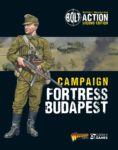
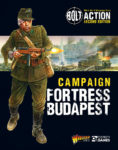
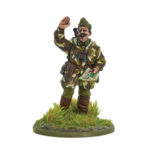
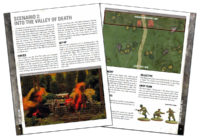
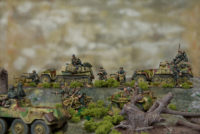
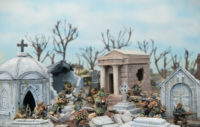
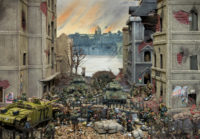
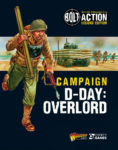
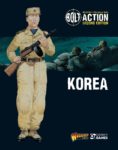












July 1st, 2019 - 16:30
Thank you for the work to put the information all together. I like the idea of cityfights because you have a better feeling how to work troops together with the tabletop terrain. It is more fluffy and sometimes its a funny to play games with smaller troops. Historical it is nice to see and get the information for a battle you have not really in the field of your`e vision as the usual conflicts to replay. greetings from http://www.detektei-schuett.de